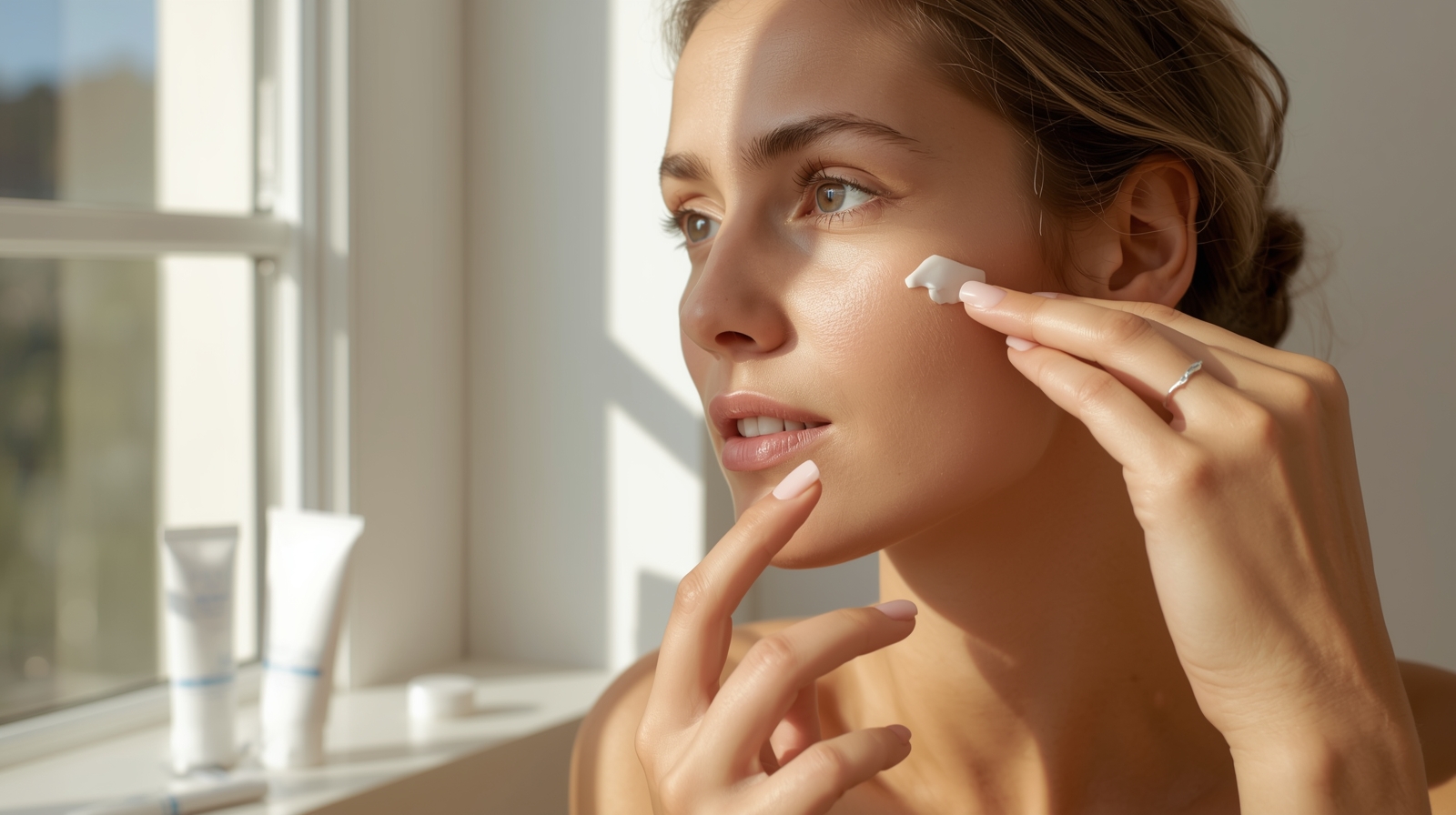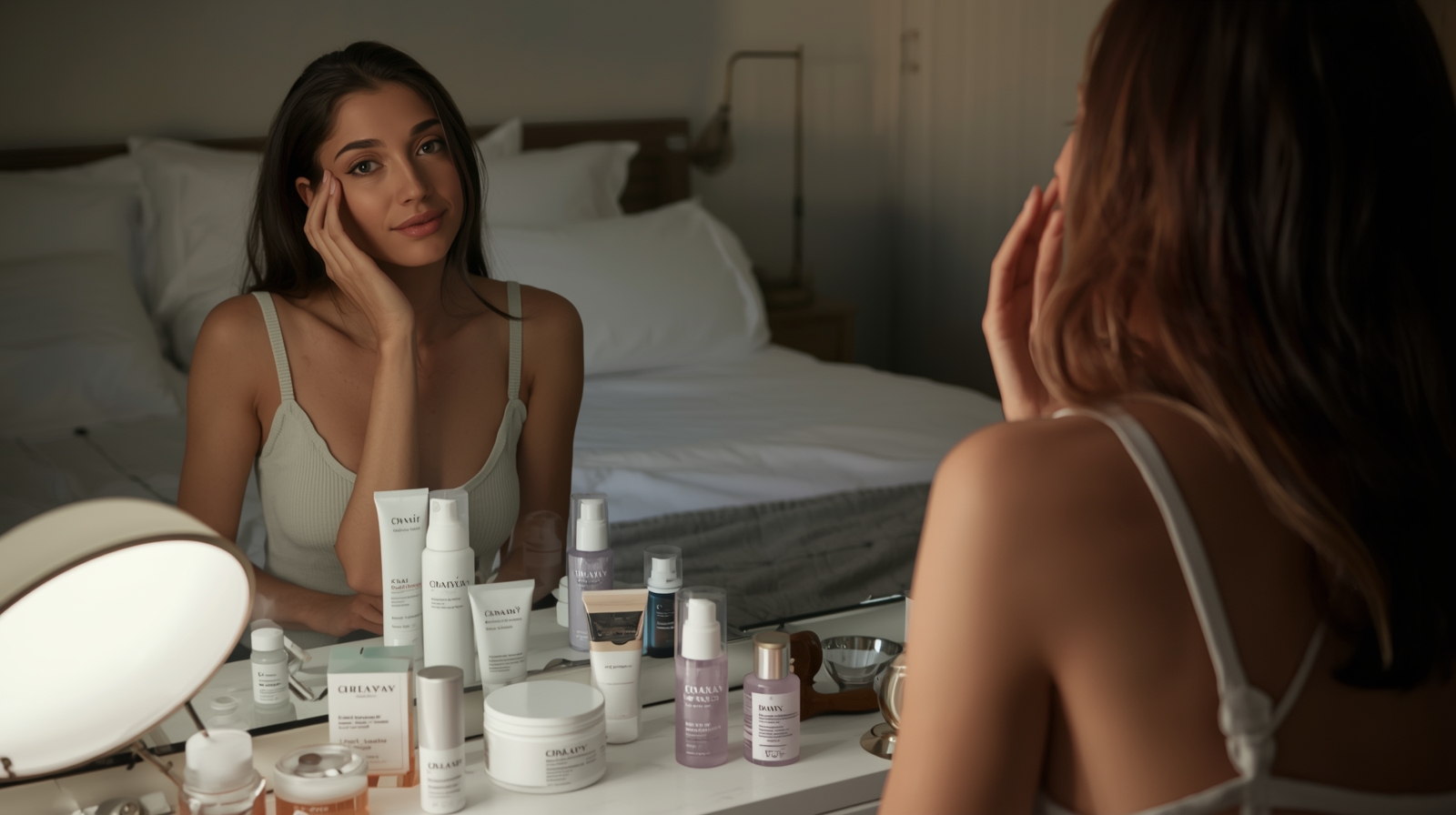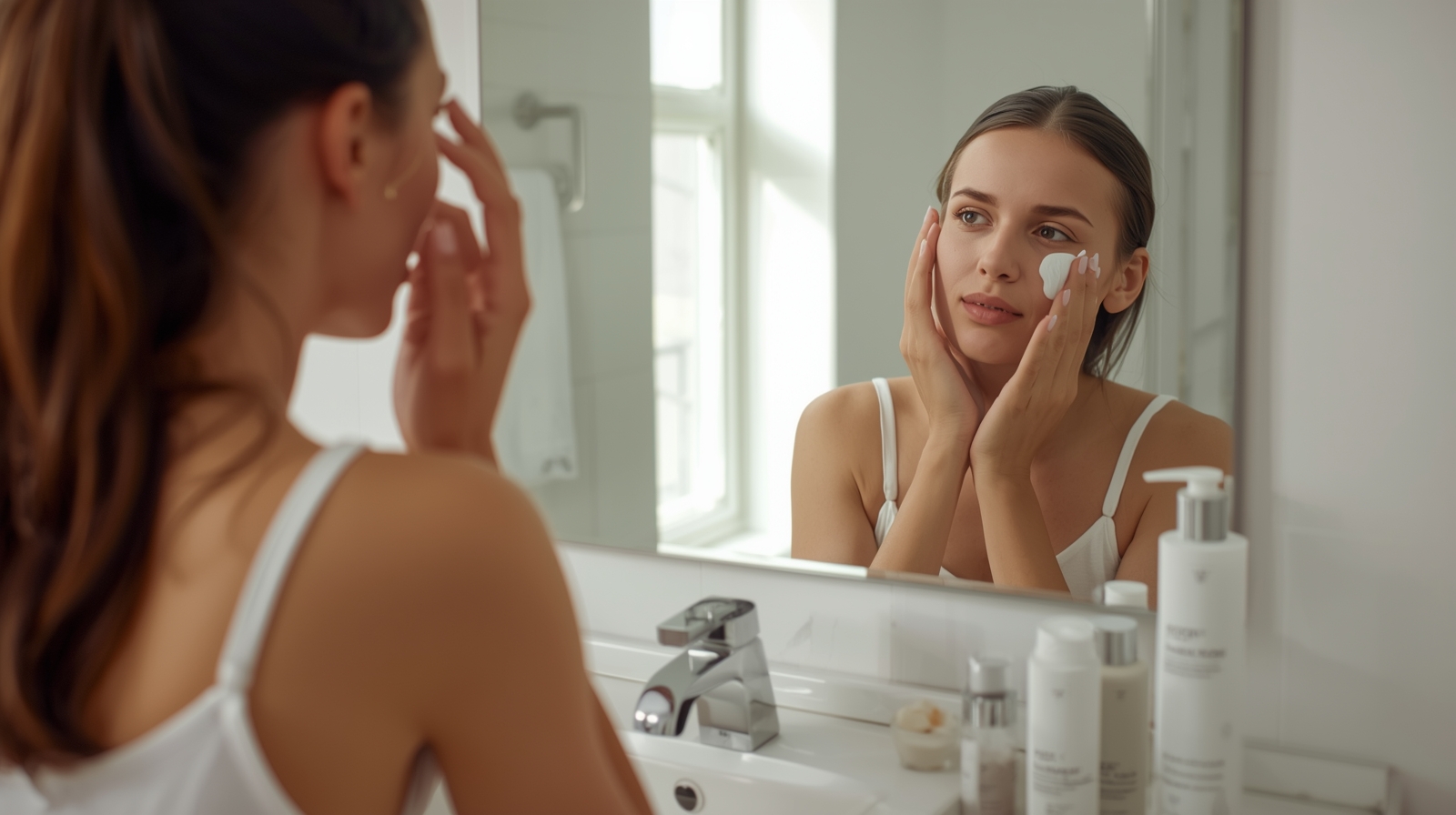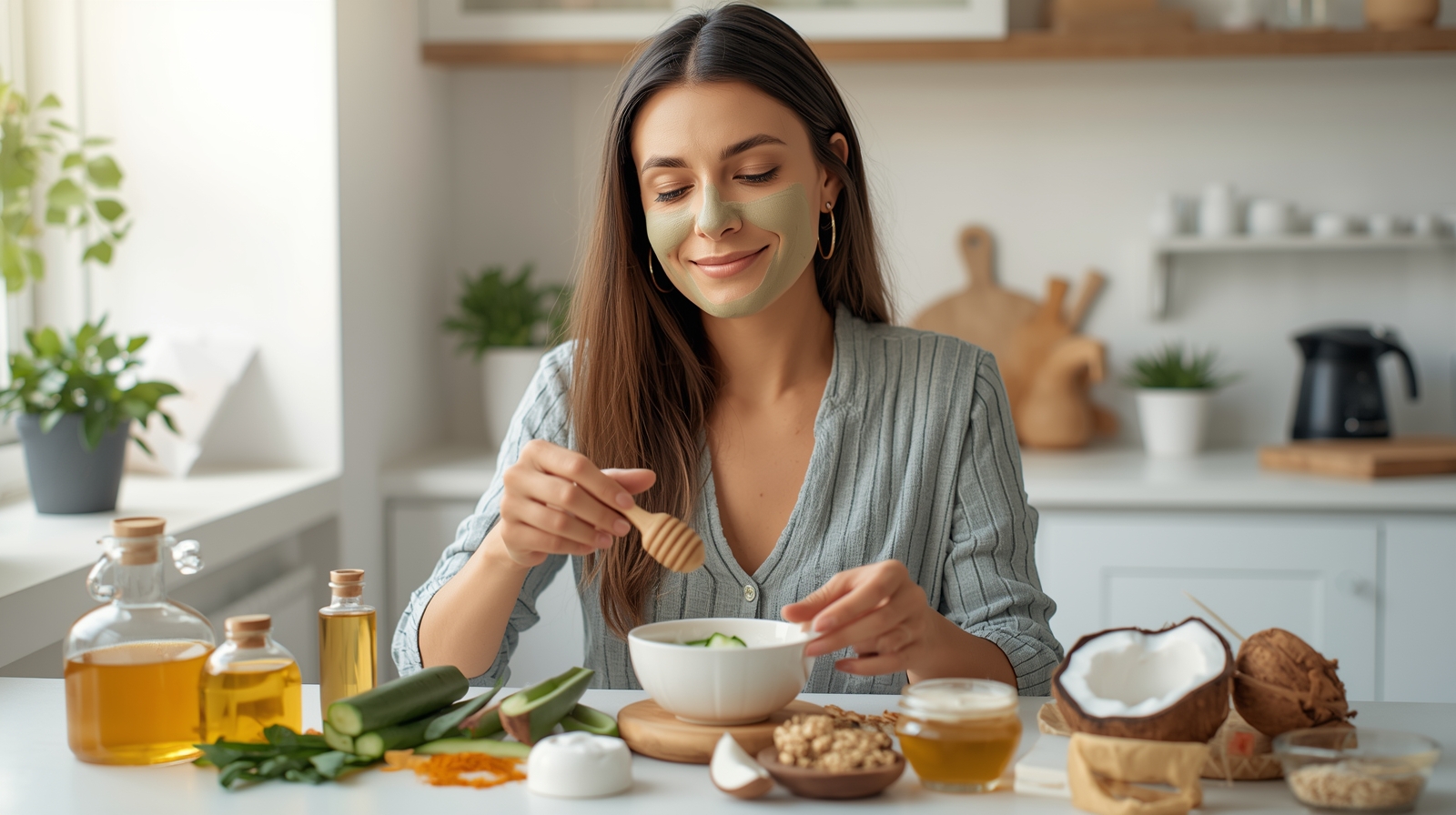Sunscreen plays a major role in skincare. It protects the skin from damage caused by sunlight and supports the results of other skincare steps. Many people invest time in cleansers, serums, and moisturizers, yet skip sunscreen or apply it irregularly. This single habit can reduce the effectiveness of an entire skincare routine.
Understanding why sunscreen matters and how to use it correctly is essential. This article explains the importance of SPF, how it works, the types of sunscreen available, and how to choose the right one for daily use.
Section 1: What SPF Means
SPF stands for Sun Protection Factor. It measures how long a sunscreen can protect the skin from UVB rays, which cause burning. For example, SPF 30 allows someone to stay in the sun 30 times longer than they could without protection before burning.
SPF only measures UVB protection, not UVA. UVA rays penetrate deeper and contribute to aging and long-term skin damage. A product labeled “broad-spectrum” protects against both UVA and UVB rays.
Section 2: How Sunscreen Works
Sunscreens work by creating a barrier on the skin that either absorbs, reflects, or scatters ultraviolet radiation. There are two main types: chemical and physical (mineral).
- Chemical sunscreens absorb UV rays using active ingredients such as avobenzone or oxybenzone.
- Physical sunscreens contain minerals like zinc oxide or titanium dioxide, which reflect rays off the skin surface.
Both types are effective when used correctly. The best choice depends on personal comfort, skin sensitivity, and lifestyle.
Section 3: Why SPF Is Non-Negotiable
Daily exposure to sunlight contributes to skin damage even when it is not visible. UV radiation breaks down collagen, causes uneven tone, and weakens the skin barrier.
Without sunscreen, this damage accumulates slowly and leads to long-term effects such as roughness, dark spots, and visible lines. Using sunscreen helps maintain the natural structure of the skin and supports its recovery from other treatments.
Every skincare product — from serums to moisturizers — works better when the skin is protected from sunlight. Sunscreen is not an optional step; it is the foundation that keeps the rest of the routine effective.
Section 4: The Two Types of UV Radiation
Understanding the two main types of ultraviolet radiation explains why daily SPF is necessary.
1. UVA Rays
These penetrate deep into the skin. They cause long-term changes in skin texture and contribute to early aging. UVA rays are consistent throughout the year and can pass through windows and clouds.
2. UVB Rays
These affect the surface layer of the skin and are responsible for tanning and burning. UVB intensity changes by season and time of day but remains harmful even on overcast days.
Both UVA and UVB exposure increase skin stress and the risk of long-term damage, making SPF protection essential all year.
Section 5: Why Daily Sunscreen Use Matters
Many people think sunscreen is only needed during outdoor activities or summer months. This is a common mistake.
UV exposure occurs every day, even indoors or in vehicles. UVA rays pass through glass, affecting the skin while driving or sitting near a window. Regular use of SPF ensures consistent protection, preventing small daily damage that adds up over time.
A consistent sunscreen habit helps maintain even tone, smooth texture, and long-term health.
Section 6: The Role of Sunscreen in Preventing Skin Damage
Sunscreen protects against several forms of damage caused by sunlight:
- Barrier Breakdown: UV rays reduce the skin’s ability to retain moisture.
- Pigmentation: Overexposure increases melanin production, leading to uneven tone.
- Inflammation: UV light triggers inflammatory responses that affect skin balance.
- DNA Damage: Long-term exposure may alter skin cells’ natural repair process.
Regular SPF use reduces these risks and supports overall skin function.
Section 7: Common Myths About Sunscreen
Myth 1: Darker skin tones do not need sunscreen.
Fact: All skin types can be damaged by UV radiation. While darker tones may not burn as quickly, they are still vulnerable to uneven tone and long-term harm.
Myth 2: Sunscreen is only needed in summer.
Fact: UV exposure occurs year-round, even in winter and cloudy weather.
Myth 3: Makeup with SPF is enough.
Fact: Makeup with SPF provides minimal protection because it is applied too thinly. A dedicated sunscreen layer is necessary beneath makeup.
Myth 4: Higher SPF means all-day protection.
Fact: SPF 50 provides more protection than SPF 30, but both require reapplication every two to three hours for continuous coverage.
Section 8: Choosing Between Chemical and Mineral Sunscreens
Both options offer effective protection, but they differ in formulation and feel.
- Chemical Sunscreens:
- Absorb easily into skin.
- Often suitable for normal or dry skin types.
- Require about 15 minutes after application to become effective.
- Mineral Sunscreens:
- Sit on the surface and start protecting immediately.
- Preferred by those with sensitive or easily irritated skin.
- Contain zinc oxide or titanium dioxide as active ingredients.
The right choice depends on comfort, skin response, and usage preference.
Section 9: How to Apply Sunscreen Correctly
The effectiveness of sunscreen depends on proper application. Many people use too little or apply it unevenly.
Steps for correct application:
- Apply sunscreen as the last step in the morning routine, after moisturizer.
- Use about one teaspoon for the face and neck.
- Spread evenly without rubbing harshly.
- Apply 15 minutes before sun exposure if using chemical sunscreen.
- Reapply every two to three hours, or after sweating or swimming.
Daily consistency is more important than occasional heavy application.
Section 10: When to Reapply Sunscreen
Reapplication maintains continuous protection. Sunscreen naturally breaks down due to sweat, oil, and environmental contact.
Reapply in these cases:
- Every two to three hours when outdoors.
- After swimming or excessive sweating.
- After wiping the face with a towel.
For indoor use, reapplying once halfway through the day is sufficient, especially if sitting near sunlight.
Section 11: Layering Sunscreen with Makeup
Women often wonder how to use sunscreen with makeup. The answer is layering correctly.
Steps:
- Complete skincare routine (cleanser, moisturizer, sunscreen).
- Wait two to three minutes for sunscreen to absorb.
- Apply primer or foundation.
- Use powder or setting spray with added SPF for touch-ups.
Avoid mixing sunscreen directly with makeup, as it reduces protection.
Section 12: Sunscreen for Different Skin Types
Oily Skin:
Choose lightweight, oil-free formulas or gel-based sunscreen.
Dry Skin:
Use hydrating sunscreens that include ingredients such as glycerin or squalane.
Sensitive Skin:
Mineral sunscreen with zinc oxide or titanium dioxide is suitable.
Combination Skin:
Layer sunscreen lightly on oily areas and evenly on drier zones.
Matching sunscreen type to skin condition increases comfort and consistency in use.
Section 13: Sunscreen and Anti-Aging
UV radiation is one of the main external factors affecting skin texture and elasticity. Even short exposure without protection can reduce the effect of anti-aging treatments.
Sunscreen preserves collagen, helps maintain firmness, and supports even tone. Using SPF daily enhances the performance of other skincare products by preventing breakdown of their active ingredients through UV exposure.
Section 14: The Relationship Between SPF and Other Skincare Steps
Each step in a skincare routine has a function, but sunscreen acts as the final shield.
- Cleansers remove impurities.
- Moisturizers maintain hydration.
- Serums target specific skin concerns.
- Sunscreen locks all benefits in place by blocking sunlight-induced stress.
Without SPF, the results of the other steps diminish faster.
Section 15: Sunscreen in Indoor and Digital Environments
Recent studies indicate that screens from phones and computers emit blue light, which can also affect skin over time.
Although blue light exposure is less intense than UV, prolonged use of digital devices can contribute to uneven tone. Many modern sunscreens now include protection against blue light and infrared radiation, making them useful for both outdoor and indoor use.
Section 16: How Weather Affects Sunscreen Use
- Summer: Reapply more often due to sweating.
- Winter: Use moisturizing sunscreen to prevent dryness.
- Rainy Days: Still apply, as UV rays pass through clouds.
- Snowy Conditions: Snow reflects up to 80% of UV rays, requiring extra SPF.
Environmental awareness ensures year-round skin protection.
Section 17: Signs You Are Not Using Enough Sunscreen
- Redness or sensitivity after a short time outdoors.
- Uneven tone appearing after regular sun exposure.
- New freckles or dark patches forming.
- Tightness or dryness after sunlight contact.
These signs suggest that more sunscreen or reapplication is needed.
Section 18: Sunscreen and Skincare for Women
Women often include multiple steps in their skincare routines, but sunscreen is the single product that sustains all others. For women balancing work, family, and outdoor activities, daily SPF ensures lasting results from all skincare investments.
Consistent use reduces the need for corrective treatments and maintains even tone across years of care.
Section 19: Sunscreen for All Ages
Protection should start early and continue through all life stages.
- Teens: Build the habit early to prevent long-term damage.
- Adults: Maintain routine to support ongoing skin renewal.
- Older Adults: Continue SPF to protect thinner skin and reduce dryness.
Age does not reduce the importance of sunscreen; it increases it.
Section 20: How to Choose the Right SPF Level
SPF 30 is the minimum recommended level for daily use.
- SPF 15 blocks about 93% of UVB rays.
- SPF 30 blocks about 97%.
- SPF 50 blocks about 98%.
The difference is small, but higher SPF provides longer protection. For outdoor activity or prolonged sun exposure, SPF 50 is ideal. For normal indoor days, SPF 30 is sufficient.
Section 21: Understanding Broad-Spectrum Sunscreen
Broad-spectrum means the product protects against both UVA and UVB rays. Always choose broad-spectrum formulas to ensure complete coverage.
Some sunscreens may focus only on UVB, which prevents burns but not deeper damage. Reading labels helps identify full protection.
Section 22: Sunscreen Myths About Vitamin D
Many people skip sunscreen to allow vitamin D absorption. However, normal outdoor exposure through daily routines already provides enough vitamin D for most people.
The skin can still produce vitamin D even with sunscreen applied, as no product blocks 100% of UV radiation. Balancing health and protection is possible through consistent use.
Section 23: Water-Resistant Sunscreens
For sports, swimming, or hot climates, water-resistant sunscreens are useful. They maintain protection for 40 to 80 minutes of water exposure.
After swimming or sweating heavily, always reapply. No sunscreen is fully waterproof; water resistance simply extends the duration of protection.
Section 24: Storage and Shelf Life
Store sunscreen in a cool, dry place away from direct sunlight. Heat can reduce its effectiveness.
Check the expiration date before each use. Expired sunscreen loses its protective properties and can cause uneven application.
Section 25: Incorporating Sunscreen into a Daily Routine
Morning Routine Example:
- Cleanse the skin.
- Apply moisturizer.
- Apply sunscreen evenly.
- Wait a few minutes before makeup.
Afternoon Refresh:
- Reapply sunscreen or use a powder-based SPF product.
Consistency ensures long-term benefits without disruption to your schedule.



